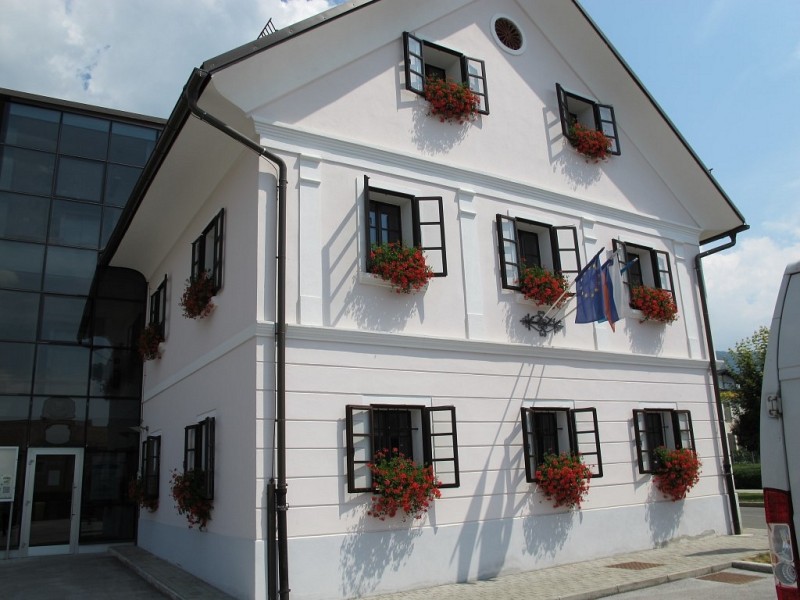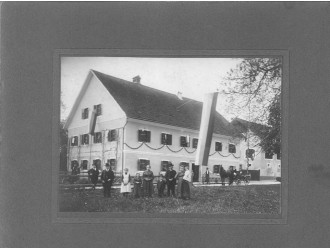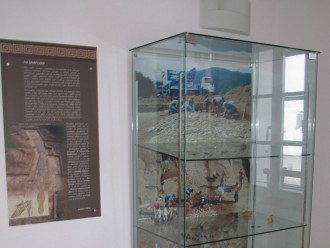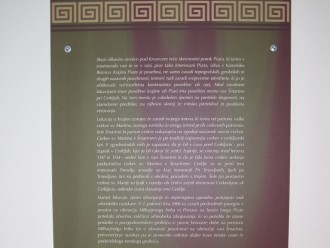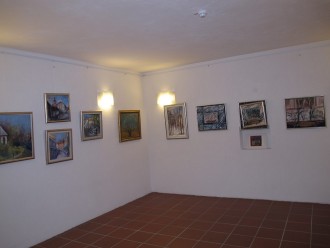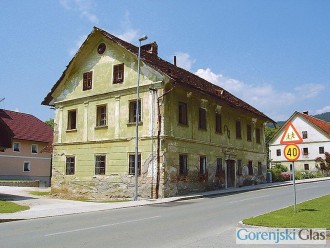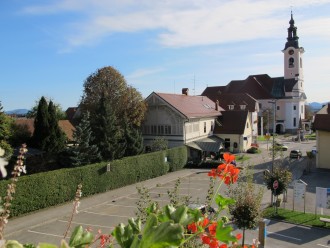PR' PETROVC
Petrovec house
The museum is currently closed.
Petrovec's house was a small wooden farmhouse up until the mid 18th century. During this period in Gorensjka old wooden and half wooden houses were disappearing, in fact wood construction was only used by small farmers and cottagers.
At that time Petrovec's house was enlarged, and so became a formidable brick house with a rich facade and frescoes. The house has become an eloquent witness to the lifestyle and mentality of the richer farm people of the time. It reflects the self confidence and large properties of their respective owners. In the middle of the 19th century the house got its present appearance, with 1863 carved above the portal. By then the owners had also opened a restuarant.
After the First World War it was known as 'a restaurant, renowned far and wide, where you can enjoy first class company, selected Bizeljsko and other wines, which has the best reputation, the most respect and the best attendance in town. It has been open since 1863'. It was then owned by Andrej Murnik, born in Adergas, who also worked in the timber trade and was a long time Cerklje mayor.
How the house was furnished
In most of the village restaurants the furnishings in the rooms for guests was very simple. Elongated bench tables normally stood by the windows, with a vessel and basin for washing on the other side of the table.
There was a wall cabinet for spirits, and some of the better-off families such as the Petrovič's also had a built in cabinet for glassware. Nothing was on the walls except for maybe some family photographs, religious pictures and bokhov's corner. The tables were not clothed, and in the corner spittoons were filled with sawdust or sand. Windows were covered only in the evening. More upmarket restaurants usually had two rooms, one for daily visitors and a special room for more guests, usually only in the evening or on Sundays.
This space was far more distinguished with beautiful accessories, curtains on the windows and printed pictures of hunting and other scenes on the walls. There was also a sideboard for glassware, and in front of it a table or bar for drink refills. The cabinet for glassware, tablecloths and other fine items were a clear sign of a better tavern.
In the museum's ethnological collection articles are presented which relate to catering, such as the equipment of these rooms and devices used for the preparation of food and drinks. The exhibits are completely from private collections.
Archeological collection
Among the many sites of old settlements on the landscape, the village of Šmartno has a special place.
Even the name of the place is special, coming from the patron of the village church St. Martin, an old saint and one of the very first church patrons.
Prehistoric burial sites from the Late Bronze Age were discovered by the Milharjev hill, as well as a long route of Roman roads and Roman rural cemetaries.
Reconstruction
The municipality of Cerklje na Gorenjskem decided within the frame of the Operational Programme for Strengthening Regional Development Potentials 2007-2013 to renovate and reconstruct the cultural monuments of protected buildings with secular built heritage. The municipality of Cerklje na Gorenjskem purchased homesteads built of stone and brick walls, whose origins date back to before the 18th century, and all the associated land from its previous owner. The house was bought in the years 2006-2007, to regulate activites within its broader social significance. The project was partly financed by the European Union and in particular the European Regional Development Fund.
Although the history of the householder's life and the other farm dwellers is not yet fully explored, the original name of the farm is known to be Pr 'Tolmajnar', as it was lived in by the furman (carrier) Jurij Tomajnar. With the advent of the railways, the art of furmantsvo began to decline, so Tomajnar was forced to sell the farm at an auction. It was sold in around 1865 to Janez Zamljen Petrovec from Cerklje. When the homestead was purchased it was renamed after its new owner. However, Janez Zamljen had no male heir. His daughter was married to Andrej Murnik from Adergas, who was an intelligent entrepreneur in the 19th century. Murnk worked in many trades other than farming, such as the timber trade, hotel trade, wine and transport, as well as eventually becoming the mayor of Cerklje.
Today, Pr 'Petrovec', which was once a trade-apartment house which also had a restaurant until World War II, runs the tourist information centre, an art gallery, museum and a library. The Institute for Cultural Heritage of Slovenia and its Organization department in Kranj cooperated for the reconstruction of the house in its former image.
The museum of Gorenjska joined the project to revive the life of the house as a village restaurant and to set up the archaeological-ethnological collections.


